This article was co-authored by Anthony Stark, EMR. Anthony Stark is a certified EMR (Emergency Medical Responder) in British Columbia, Canada. With over 11 years of experience, he has worked as an industrial medic and provided urban and rural paramedic services. He currently works for Mountain View Safety Services and previously worked for the British Columbia Ambulance Service. Anthony has a Bachelor of Engineering in Electrical, Electronics, and Communications Engineering from the Georgia Institute of Technology. He has completed the EMP Canada EMT Course and Swiftwater Awareness Training associated with the British Columbia Ambulance Service.
There are 18 references cited in this article, which can be found at the bottom of the page.
This article has been viewed 22,698 times.
A Colles fracture is a fracture to the part of your wrist closest to your hand (the distal part of your wrist). It is the most common kind of wrist fracture, as it occurs typically in a fall on an outstretched hand. If you suspect that you have a Colles fracture, you will need to treat it properly in order to ensure that it heals quickly and properly.
Steps
Caring for the Injury Immediately
-
1Avoid moving your wrist as soon as the injury occurs. If you have fallen or something else has happened where you think your wrist has fractured, it is important to keep it from moving around too much. You don't necessarily have to go see the doctor that day if the pain is not too severe and the wrist doesn't look deformed; however, you should go to the doctor by the next day.[1] In the meantime, make sure not to use your wrist or move it more than you have to.
- If the pain is severe or the wrist looks deformed (the bone is sticking out or you think it might have fractured in more than one place) you should go to the hospital immediately.
- Do not eat or drink anything (even water) if your wrist is malformed and likely to need to be put back into place (closed reduction). In that case, anesthesia will need to be administered and you might experience nausea that would cause you to vomit during or right after the reduction.
-
2Assess the symptoms you have. Symptoms include: pain at the wrist, bruising at the wrist, swelling at the wrist, deformity of the hand or wrist, and numbness or tingling of the fingers.[2] There is also a potential for paleness of the extremity or fingers, but this is usually due to complications.
- If there is paleness or lack of mobility of the fingers, the fracture will require a visit to the doctor.
- Those with Colles fractures also usually have a history of a fall, usually in which they used an outstretched hand to brace themselves for the fall. This may include high impact trauma in a younger patient or lower impact trauma in an older osteoporotic adult.
Advertisement -
3Find a splint that you can use to keep your wrist immobile. You should look for something that can keep your wrist from moving. The splint should be as long as your forearm, wrist and hand. If you don't have a proper medical splint at your house (or wherever you are when the injury occurs) you can use other objects that are wide, flat, and the right length.[3]
- For example, if a ruler runs the length of your hand, wrist, and most of your forearm, use a ruler as a splint.
- A folded length of newspaper that runs past your elbow and to the middle joints of your fingers works as well. The general rule for splinting is that the joint above the fracture (ie: the elbow) and all the joints below (fingers and thumb) need to be immobilized to protect the fracture. Bear this in mind when splinting.
-
4Place your arm on the splint. Do not try to straighten your wrist out when you place it on the splint; you should leave it at the angle it is bent at after your injury. If you try to straighten it out, you could actually make the fracture worse. Instead, rest your wrist and arm on the splint.[4]
- Pad the hollow areas between your arm, wrist, fingers etc and the splint to make sure the fracture is supported and not deformed by the wrapping.
-
5Wrap the splint and your wrist. Wrap your lower arm and wrist in gauze or an Ace bandage. You should wrap it tight enough that it won't move but not so tightly that it cuts off circulation to your hand.[5]
- If you don't have gauze or an Ace bandage on hand, you can use a scarf or bandanna to keep your wrist in place against the splint.
- Work from above the break down. Check the circulation in your fingertips after wrapping by pressing on the fingernail. If the color does not return promptly, loosen the bandage and re-wrap.
-
6Ice your wrist. Use an ice pack or bag of ice to ice your wrist. Place the ice pack on top of your wrist, making sure that the ice covers the area where the fracture occurred.[6] The ice will help to bring the swelling down and will keep further swelling from happening.
- Don't place ice directly on the skin. You should already have your wrist wrapped, so this shouldn't be an issue.
- You can leave the ice pack on your wrist for up to 10 minutes, then give your skin a chance to return to its normal temperature.
-
7Take over-the-counter (OTC) pain medication. You can take acetaminophen to help you deal with the pain caused by your fractured wrist. You may also consider taking ibuprofen and acetaminophen together to combat the pain and swelling at the same time.[7]
- Do not do this, however, if your wrist is malformed and likely to need to be put back into place (closed reduction). In that case, anesthesia will need to be administered and having pain medication in your system can interfere with that. If you choose to take pain medication anyway, be sure to inform your doctor.
-
8Hold your wrist still on the way to the hospital. When you head to the hospital, you should hug your arm to your chest to keep it from moving around while you are in the car. If you have a sling, put your arm into it so that you don't have to worry about your wrist moving around too much.[8]
- You can also make a sling out of a scarf or other piece of clothing.
Getting Treated at the Hospital
-
1Have x-rays taken of your wrist. When you get to the hospital, your doctor will take x-rays of your wrist to determine how badly your wrist has been fractured.[9] This is the best way to see the damage to the bone and to figure out the best course of treatment.
-
2Have the severity of the fracture assessed. Fractures are described in terms displacement of fragments and involvement of the joint. Displacement of fragments means how many of the bone pieces are out of place. Displacement can be minimal or great, and is judged on a spectrum. The other prominent feature in gauging the severity of fractures is whether the fracture involves a joint, or is “articular," in contrast to an extra-articular fracture, in which the joint is not involved. Breaks involving joints are inherently more severe because healing them is more complicated.
- There are several classifications of Colles fractures, depending on the severity of the injury. Colles fractures are referred to as: Type I: extra articular and non-displaced, Type II: extra articular and displaced, Type III: intra articular and non-displaced, and Type IV: Intra articular and displaced.[10]
- The criteria that define a break as a Colles fracture include: transverse fracture of the radius, the fracture occurs within 2.5 cm proximal to the radio-carpal or wrist joint, and dorsal or posterior displacement and dorsal angulation with a radial tilt. [11]
-
3Get a cast applied to a hairline fracture. This type of small fracture does not require realignment of the bone. Instead, your bone just needs to be held in place in order to heal properly.[12]
-
4Undergo a closed reduction and a cast applied to a fracture. If your wrist is fractured so that the ends of the bone overlap or are slightly at an angle, your doctor will most likely perform a closed reduction. For this treatment, the wrist is manipulated and positioned so that the bones are in the correct position. Then a cast is applied to keep the wrist in this proper position. The majority of Colles fractures may be treated non-surgically with a cast for a period of 6 weeks.[13]
- You will be given anesthesia if you have to have the bones in your wrist repositioned. However, keep in mind that this procedure doesn't require surgery. Your doctor is essentially just popping your wrist back into place.
- You might have to wear a splint for a couple of days to deal with the swelling in your wrist before getting a proper cast.
- There are some newer casting technologies which allow for the structural integrity and durability of a cast, while still allowing for a degree of airiness and the and ability to bathe normally. Closed reduction would be appropriate for Types I, II fractures certainly, and may be appropriate for Type III fractures. ( Diaz-Garcia, 2012).
- In recent studies, there are few differences in comparison of non-operative and operative management of Colles fractures.[14]
- In elderly patients with distal radius fractures, those who received treatment with closed reduction (moving the bone back into place manually) with casting alone had equal functional status scores and significantly decreased pain scores.
- In patients who reported excellent functional status, 77% had a notable visual deformity the “dinner fork deformity” often seen in this fracture. This deformity did not correspond with poor functional outcome, or patient dissatisfaction. Persistent pain was correlated with patient dissatisfaction and surgical treatment.
-
5Ask about surgical treatment. If the fracture is determined to be unstable, then you may need surgical treatment, which is also called an open reduction. You would have to have this surgery done if: the fracture involves the wrist joints, the fractured bone breaks through the skin, the bone is fractured or broken in many places, or the injury also involves torn ligaments. Basically, if you have really done a number on your wrist and it is severely fractured, you may be referred to an orthopedic surgeon so that you can have your wrist corrected surgically.
- This will occur if a closed reduction does not result in satisfactory use of the wrist, there is a “shortening” of the radius of greater than 5 mm, or it is a comminuted fracture with greater than 3 fracture fragments of the radius.
- With surgery, the fracture is placed back together with tiny plates and screws to achieve an anatomically superior result. The extremity will still be placed in a splint or cast and monitored sequentially during the 6 week healing period. This approach would be typically considered more favorable in younger patients. A superior radiographic outcome is not always correlated with a superior functional outcome, but it is always the goal, set out upon when repairing these fractures.
- During the operation, you will be asleep (under general anesthesia) and your bones will be straightened, placed correctly and held together with pins, plates and/or screws specifically designed for use in bone. After surgery your wrist will be placed in a splint or cast to prevent it from moving.[15]
- Complications are not dependent on treatment method selected, but due to the trauma sustained. Specific complications include: the presence of a cosmetic “dinner fork” deformity, median nerve palsy or weakness also called post traumatic carpal tunnel syndrome, or Reflex Sympathetic Dystrophy (RSD) or Chronic Regional Pain Syndrome. This occurs as a result of injury to the median nerve from compression due to swelling, or lack of blood flow, secondary to a compartment like syndrome.[16]
Recovering After Treatment
-
1Wear your cast for the required time. Most patients have to wear a cast for 4 to 6 weeks depending on the extent of your injury and how fast you heal. While you have the cast on, your doctor will provide you with instructions to promote healing and will provide you with a sling.[17] The basic instructions are also listed in this section.
-
2Elevate and rest your wrist. Keep your wrist elevated and make sure to rest it for at least a week after you get the cast. Keeping your wrist elevated means making sure that it is kept up above your heart. Resting your wrist means avoiding strenuous exercises or activities in which you use your wrist.[18]
- You can do this by sitting in a chair and propping your wrist up with pillows. Reclining chairs work the best, but any chair or sofa will do.
-
3Do not get your cast wet. Water will damage the cast and can get in between your cast and arm, promoting conditions that can lead to an infection, especially if you had surgery and have an incision. If you take a shower or bath, place a plastic bag securely over the cast and tape the ends of the bag so that no water can get into the cast. Ideally you should avoid having water fall on the cast during bathing.[19]
- Some doctors advise placing a towel over the plastic bag as an extra precaution.
- You may want to ask a family member or friend to help you bathe or shower.
-
4Avoid doing things that could harm your wrist. You should try to keep your wrist from moving as much as possible. This means that you should avoid the activities that involve the use of your wrist. You should also avoid situations where someone could bump into your injured wrist.
- As an added protection, always wear your sling when you go out in public because it will keep it from moving when you walk and will alert others to the fact that you have an injury and they should make an effort not to bump into you.
-
5Try your hardest to avoid sticking things in your cast to scratch an itch. After a couple of days, your cast-covered arm might become itchy. The itching is usually from hair growth under the cast, minor irritation that the cast causes your skin, or from dead skin cells that are normally shed but can't because there is a cast trapping them.
-
6Watch for signs of infection if you have had surgery. The orthopedist will follow the area where the pins are placed carefully for signs of infection. Signs of infection include redness or swelling at pin/wire sites, drainage from the insertion site, fever, and warmth of the skin in the area.
-
7Check in with your doctor. Your doctor will most likely ask you to come in throughout your recovery time. They may take x-rays to make sure that your wrist is healing properly. If it is, your doctor will most likely give you a smaller cast (meaning that they will cut off the ends of your cast) making it easier for you to bathe and scratch those itches you've been dreaming of relieving.
-
8See a physical therapist after the cast has been removed. Once you are free of your cast, you will be asked to go see a physical therapist who will help you perform exercises to regain the strength in your wrist and surrounding muscles, and to regain normal function of your wrist. Physical therapy usually lasts a month, with three to four sessions each week.[20]
- The therapist will also give you exercises that you can perform at home on your own. The more you practice the exercises as directed by your therapist, the faster you will regain function of your wrist.
Warnings
- If there is bone sticking out of your skin, or you think more than one bone may have fractured, go to the hospital right away.⧼thumbs_response⧽
- The goals of treatment are not the same for all patients. With a type II or III fracture, for example, the patient's functional status and reasonable goals for outcomes are taken into consideration.[22] The treatment outcomes for a reasonable return to function are not the same for an 87 year old patient who needs to obtain an outcome which allows her to feed and comb her hair, for example. The outcome goals are not the same as that of a 25 year old active young adult with the same type or classification of Colles fracture. Newer research in elderly patients in which actual outcomes, as measured by the patient reflecting their ability to function and range of motion as well as persistent pain are drawing attention to the fact that there may be little difference in actual outcomes of patients treated with surgery or casting only.[23]⧼thumbs_response⧽
References
- ↑ Medoff RJ. Essential radiographic evaluation for distal radius fractures. Hand Clin. 2005; 21:279.
- ↑ https://my.clevelandclinic.org/health/diseases/21860-colles-fracture
- ↑ Howes DS, Kaufman JJ. Plaster splints: techniques and indications. Am Fam Physician. 1984; 30:215.
- ↑ Cooney, W. P. (2010). The wrist: Diagnosis and operative treatment. Philadelphia [Pa.: Wolters Kluwer/Lippincott Williams & Wilkins Health.
- ↑ Howes DS, Kaufman JJ. Plaster splints: techniques and indications. Am Fam Physician. 1984; 30:215.
- ↑ https://my.clevelandclinic.org/health/diseases/21860-colles-fracture
- ↑ http://orthoinfo.aaos.org/topic.cfm?topic=a00412
- ↑ Brown, D. E., & Neumann, R. D. (2004). Orthopedic secrets. Philadelphia: Hanley & Belfus.
- ↑ https://radiopaedia.org/articles/colles-fracture
- ↑ Clifford Wheeless MD., The Wheeless Textbook of Orthopaedics: Colles Fractures , last updated Dec 12 2012
- ↑ Sanjay Meena MD, Sharma Pankaj MD, Ashok Dawar MD, Fractures of the Distal Radius: An Overview, Journal of Family Medicine and Primary Care 2014 Oct-Dec 3 (4) 325-332)
- ↑ https://www.physio-pedia.com/Colles_Fracture
- ↑ Rafael J Diaz MD, Kevin C Chung MD, MS Common Myths and Evidence in Management of Distal Radius Fractures Hand, 2012 May 28 (2) 127-133).
- ↑ Rohit Arora MD, Markus Gabl MD, Martin Gschwentner MD, A Comparative Study of Clinical and Radiographic Outcomes of Unstable Colles Fractures in Patients older than 70 years: Nonoperative versus Volar Locking Plating, Journal of Orthopaedic Trauma, April 2009, Vol 23 issue 4 p 237-242).
- ↑ Medoff RJ. Essential radiographic evaluation for distal radius fractures. Hand Clin. 2005; 21:279.
- ↑ Sanjay Meena MD, Sharma Pankaj MD, Ashok Dawar MD, Fractures of the Distal Radius: An Overview, Journal of Family Medicine and Primary Care 2014 Oct-Dec 3 (4) 325-332).
- ↑ https://my.clevelandclinic.org/health/diseases/21860-colles-fracture
- ↑ Gutow AP. Avoidance and treatment of complications of distal radius fractures. Hand Clin 2005; 21:295.
- ↑ https://orthoinfo.aaos.org/en/diseases--conditions/distal-radius-fractures-broken-wrist/
- ↑ Dreeben-Irimia, O. (2011). Introduction to physical therapy for physical therapist assistants. Sudbury, MA: Jones & Bartlett Learning.
- ↑ Rafael J Diaz MD, Kevin C Chung MD, MS Common Myths and Evidence in Management of Distal Radius Fractures Hand, 2012 May 28 (2) 127-133
- ↑ David Nelson MD, Harris Gellman MD, Distal Fracture of the Radius, emedicine, medscape, last updated 10-8-2014
- ↑ Rohit Arora MD, Markus Gabl MD, Martin Gschwentner MD, A Comparative Study of Clinical and Radiographic Outcomes of Unstable Colles Fractures in Patients older than 70 years: Nonoperative versus Volar Locking Plating, Journal of Orthopaedic Trauma, April 2009, Vol 23 issue 4 p 237-242).
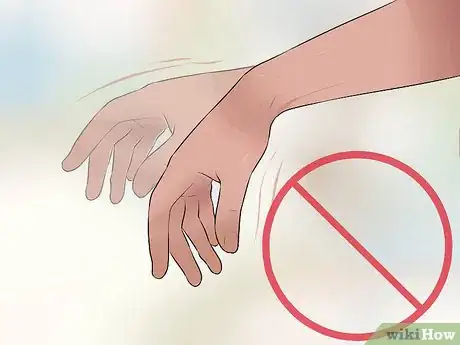

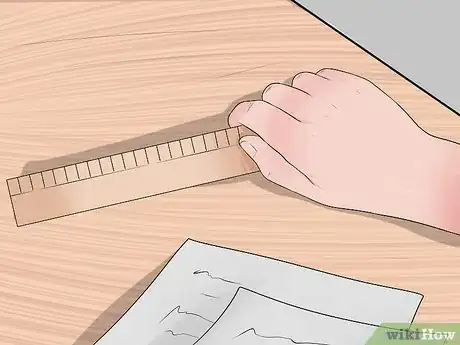
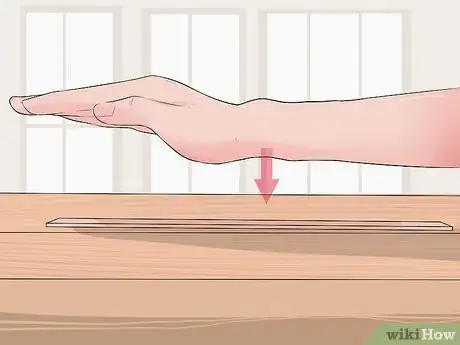






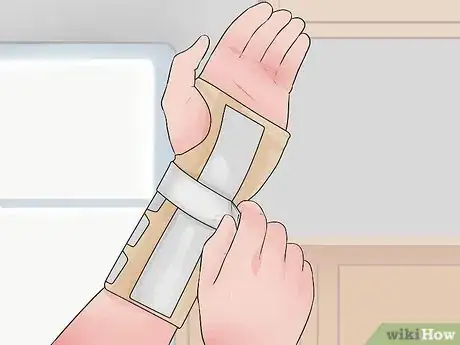


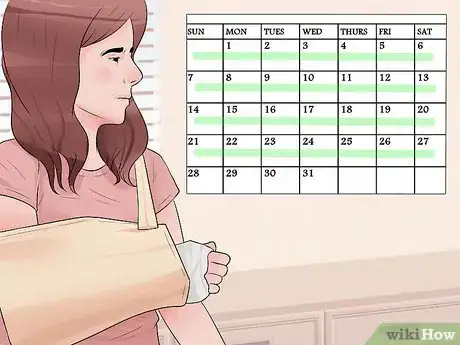
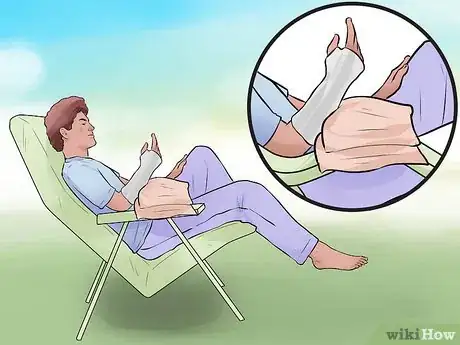

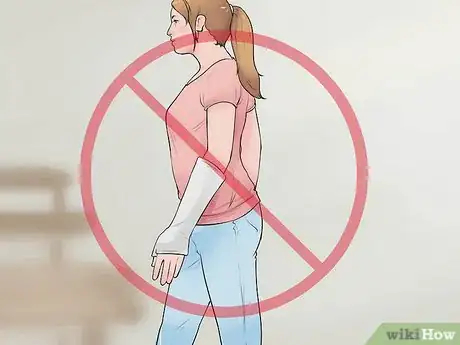







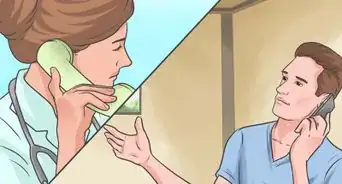
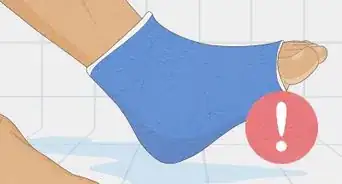

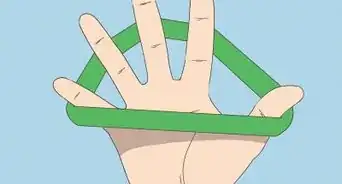

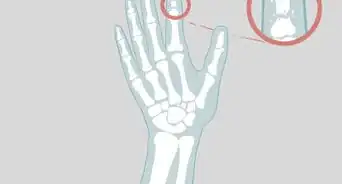


















































Medical Disclaimer
The content of this article is not intended to be a substitute for professional medical advice, examination, diagnosis, or treatment. You should always contact your doctor or other qualified healthcare professional before starting, changing, or stopping any kind of health treatment.
Read More...